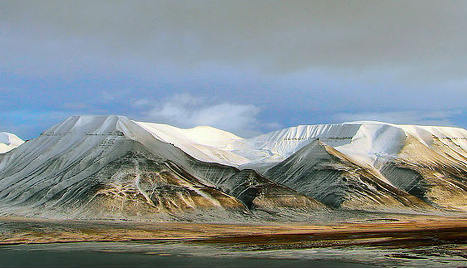SVALBARD
Huge Arctic island estate on sale in Norway
Fancy owning your own Arctic paradise more than twice the size of Manhattan, complete with coal mine, minor mountain chain and occasional polar bear?
Published: 29 April 2014 13:46 CEST

The Operafjellet mountain on the Austre Adventfjord estate. Photo: Bjørn Christian Tørrissen/Wikimedia Commons
A secretive family from Bergen, Norway, has quietly put a vast 217 square kilometre swathe of Norway's Svalbard Islands up for sale.
The property, Austre Adventfjord, located directly across the bay from Longyearbyen, the islands' capital, has been put up for sale by Henning Horn, a Norwegian industrialist and farmer, and his sisters Elin and Kari Horn.
The three sellers are the grandchildren of shipowner Jacob Kjøde, from Bergen, who bought the land in 1937 to establish a coal mining company.
"The property is now for sale and I have no comments on the actual sales process," the Horns' lawyer Sveinung Flatten confirmed to VG newspaper.
The property includes the abandoned mining community of Hiorthhamn and the Operafjellet mountain, where a Russian plane crashed in 1996, killing 141 people.
According to VG, the family put the property up for sale after falling out with Store Norske, the Norwegian mining giant which formerly operated the coal mines on the property.
The area is estimated to contain some 25 million tons of coal, which could sustain mining for more than 15 years.
Svalbard expert Willy Østreng told VG that China could be interested in buying the property to gain a foothold in the Arctic and exploit it for its coal reserves.
"China is in constant search of coal and other natural resources, and more importantly, by purchasing this property, the can use Svalbard as a platform for a long-term play on the Arctic Ocean Basin," he told the newspaper.
He pointed out that China has already established a research base in Ny- Ålesund on the island of Spitsbergen.
Url copied to clipboard!


 Please whitelist us to continue reading.
Please whitelist us to continue reading.
Member comments